25 High-Fiber Fruits That’ll Transform Your Digestive Health (Complete Guide)

Like a lot of people, I used to struggle with digestive issues until I discovered how much fiber actually matters. Most Americans get less than half the recommended daily fiber intake, which explains why so many of us deal with gut problems. The good news? Adding the right fruits to your routine can completely change your digestive health game.
This comprehensive guide explores 25 fiber-rich fruits across five distinct categories, providing detailed nutritional information, practical selection tips, and actionable advice for incorporating these gut-friendly superstars into your daily routine. You’ll discover everything from common apples to exotic passion fruit, learning how each contributes to better gut health and overall wellness.
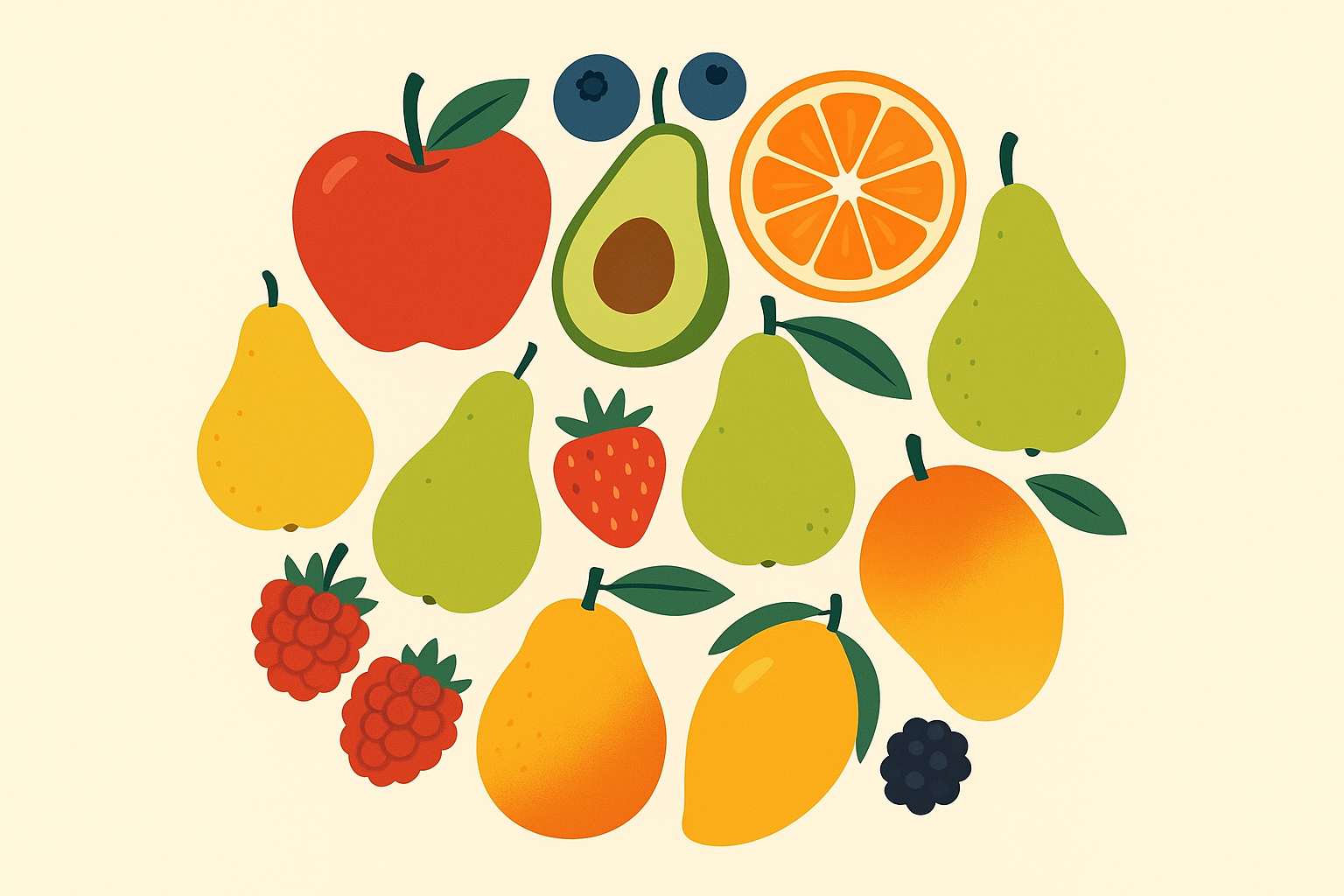
Table of Contents
- What Makes a Fruit High in Fiber?
- How to Choose the Best High-Fiber Fruits for Your Needs
- Tree Fruits: Your Everyday Fiber Champions (8 Fruits)
- Berries: Nature’s Fiber Superstars (7 Fruits)
- Tropical & Exotic Fruits: Adventure in Every Bite (5 Fruits)
- Dried & Processed Fruits: Concentrated Fiber Power (3 Fruits)
- Large Fruits: Big Servings, Big Benefits (2 Fruits)
- Smart Strategies for Each Fruit Category
- How Organic Authority Supports Your Fiber Journey
- Final Thoughts
TL;DR
- Fiber content varies dramatically between fruits – passion fruit delivers 24.5g per cup while mangoes provide 2.6g
- Eating fruit with skin intact doubles or triples your fiber intake in most cases
- Berries pack the highest fiber density, making them perfect for smaller portions with maximum benefits
- Dried fruits concentrate fiber but require portion control due to increased calories and sugars
- Gradually increase fiber intake to avoid digestive discomfort – start with 2-3 servings daily
- Fresh, seasonal fruits provide better taste and higher nutrient density than out-of-season options
- Both soluble and insoluble fiber types are important for complete digestive health
What Makes a Fruit High in Fiber?
I’ll be honest – I used to think all fruits were pretty much the same when it came to fiber. Boy, was I wrong. The difference between a mango and passion fruit is mind-blowing: we’re talking about 2.6 grams versus 24.5 grams per cup. That’s like comparing a gentle breeze to a hurricane.
Fiber comes in two main types, and both are doing important work in your body. Soluble fiber dissolves in water and forms a gel-like substance in your gut – think of it like a sponge that soaks up cholesterol and helps keep your blood sugar steady. You’ll find plenty of it in apples, pears, and citrus fruits. Insoluble fiber doesn’t dissolve – it’s basically nature’s broom for your digestive system, adding bulk and keeping things moving. Berries, fruit skins, and seeds are packed with this type.
When exploring the importance of digestive health, understanding fiber food choices becomes crucial for overall wellness. Making informed decisions about high fiber food options can significantly impact your digestive health journey.
Here’s what you need to know about daily fiber targets:
| Fiber Type | Function | Best Fruit Sources | Daily Target |
|---|---|---|---|
| Soluble | Lowers cholesterol, stabilizes blood sugar | Apples, pears, citrus fruits | 10-15g |
| Insoluble | Promotes regularity, prevents constipation | Berries, fruit skins, seeds | 15-20g |
| Total Fiber | Complete digestive health | Mixed fruit variety | 25-35g |
Whole fruits beat juices every single time. I can’t stress this enough – when you juice a fruit, you’re basically throwing away all the good stuff. An orange contains about 3 grams of fiber, but orange juice? Practically zero. The pulp and membranes contain what your digestive system actually craves.
Processing affects fiber content dramatically. Fresh fruits with edible peels provide the highest bang for your buck. Canned fruits lose some fiber during processing, while dried fruits concentrate fiber but also concentrate calories and sugars – more on that later.
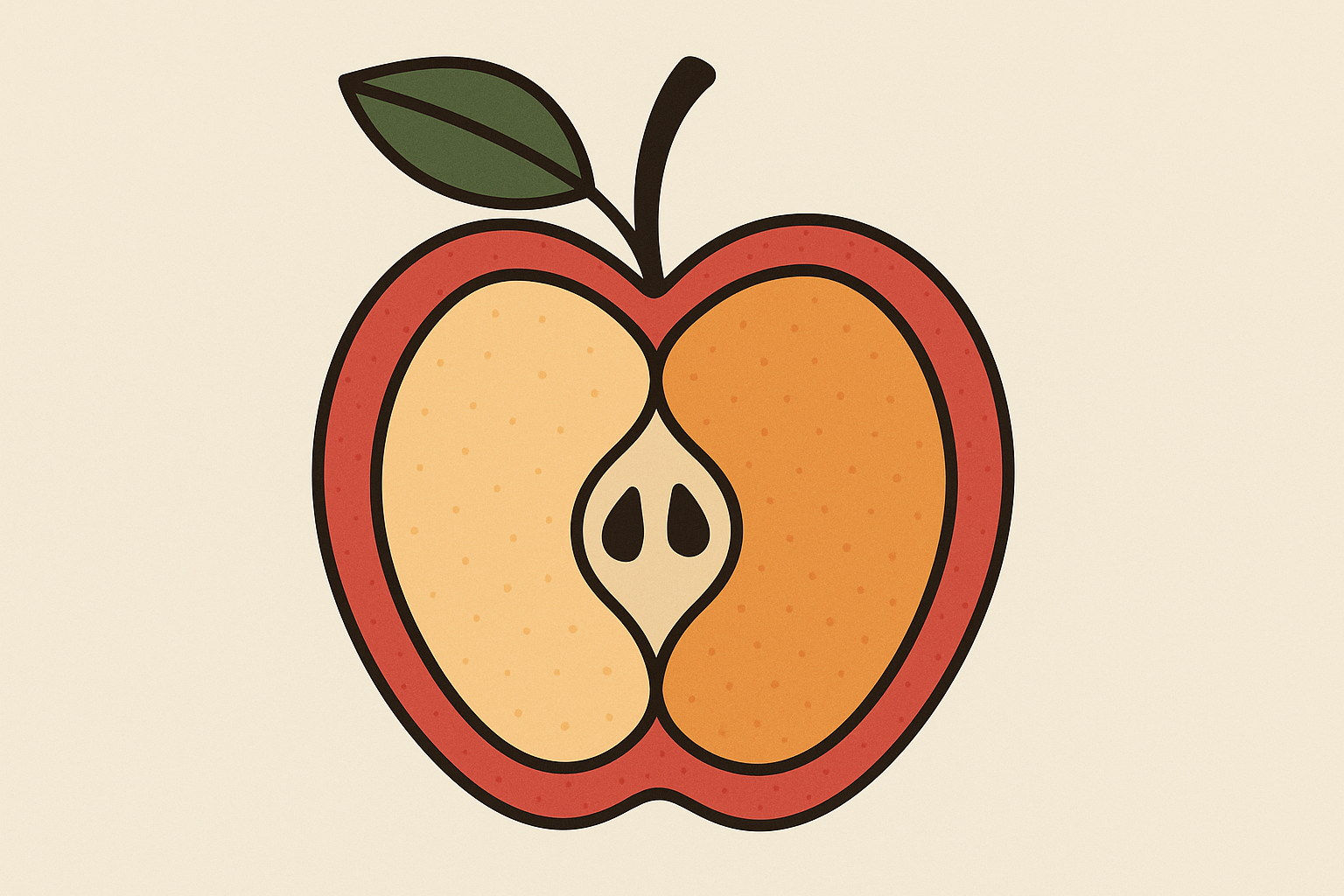
How to Choose the Best High-Fiber Fruits for Your Needs
Fiber Content and Type Matter Most
Look for fruits that provide at least 3-4 grams of fiber per serving. Anything less isn’t really pulling its weight in your daily fiber goals. The best fruits contain both soluble and insoluble fiber, giving you complete digestive benefits without having to overthink it.
Check the numbers before you buy. Raspberries deliver 8 grams per cup, while watermelon gives you less than 1 gram. That’s a massive difference when you’re trying to reach 25-35 grams daily. Incorporating high fiber foods into your daily routine requires understanding which options provide the most comprehensive benefits.
Consider Your Blood Sugar Response
High-fiber fruits typically have a gentler impact on blood sugar, but everyone’s different. The fiber slows down sugar absorption, preventing those energy spikes and crashes that leave you reaching for more food an hour later.
You know that 3 PM energy crash? High-fiber fruits with some almond butter can actually prevent that. I’ve found that combining fiber-rich fruits with a small amount of protein or healthy fat works wonders for sustained energy.
Seasonal Availability and Freshness Count
Fresh, in-season fruits taste better and pack more nutrients. I’ve learned this the hard way – those perfect-looking strawberries from across the globe in February often taste like cardboard and contain fewer vitamins than their peak-season counterparts.
Plan your fiber intake around seasons. Summer brings us fresh berries and stone fruits. Winter calls for stored apples, pears, and citrus fruits. Spring offers the first strawberries, while fall delivers pomegranates and late-season pears.
Seasonal Fiber Planning Example: In summer, focus on fresh berries (8g fiber per cup of raspberries) and stone fruits. During winter months, rely on stored apples and pears (4-6g fiber each), supplemented with dried fruits like figs (14.6g per cup) to maintain consistent intake when fresh options are limited.
Preparation Methods Affect Fiber Content
I’ll be honest – I used to peel every apple and pear I ate, not realizing I was literally throwing away half the fiber content. The skin contains most of the insoluble fiber that keeps your digestive system running smoothly.
Wash thoroughly, but keep the peel. Organic fruits are your best bet when eating peels, since they have lower pesticide residues. For conventional fruits, a good scrub with water removes most surface contaminants, and honestly, don’t stress too much about it.
Understanding proper preparation methods helps maximize the benefits of fiber foods in your diet. Whole fruits provide exponentially more fiber than processed versions.
Start Slowly to Avoid Digestive Issues
My first week trying to eat more fiber was… let’s just say I learned the hard way why you need to start slowly. I jumped from maybe 10 grams of daily fiber to 35 grams overnight. The gas situation was memorable, and not in a good way.
Increase gradually over 2-3 weeks. Start by adding one high-fiber fruit daily, then build up slowly. Your gut bacteria need time to adapt, and rushing the process leads to uncomfortable side effects that might discourage you from continuing.
Tree Fruits: Your Everyday Fiber Champions (8 Fruits)
Tree fruits are honestly my go-to recommendation for anyone just starting their fiber journey. They’re forgiving, you can find them anywhere, and most people’s stomachs can handle them without drama. Plus, let’s be real – they’re the fruits your mom probably already told you to eat.
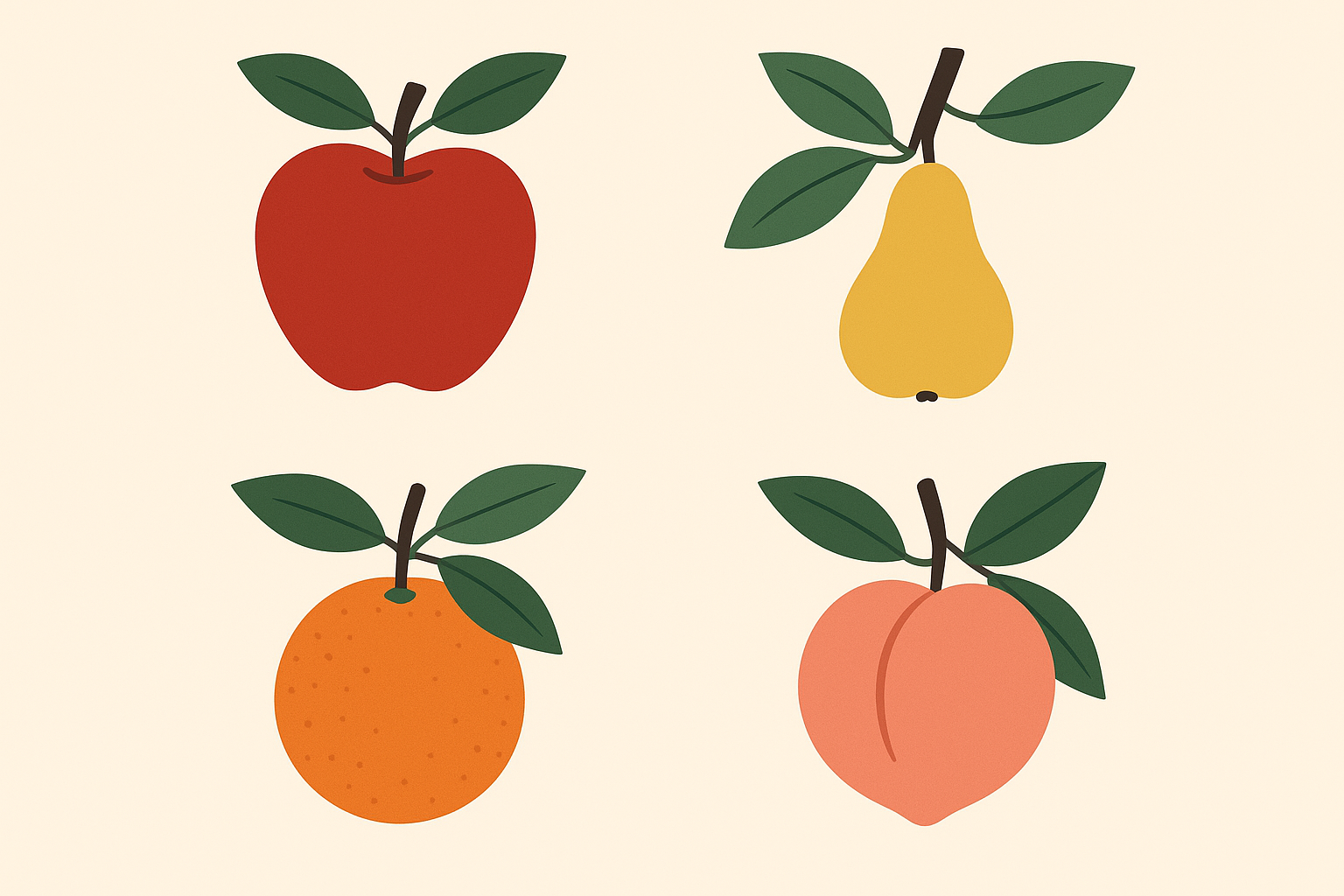
1. Apples (With Skin) – The Classic That Actually Works
A medium apple gives you 4.4 grams of fiber, but here’s the thing – I used to peel every single apple I ate. Turns out I was literally throwing away half the good stuff! The skin is where the magic happens, so unless you’re making baby food, keep it on.
I’ll admit, I was one of those people who thought organic was just marketing hype until I started eating apple peels regularly. Conventional apples can be pretty loaded with pesticide residue, and since you’re eating the skin, it’s worth spending the extra buck or two. Apples represent an accessible high fiber food that fits seamlessly into any diet.
Any apple variety works – Honeycrisp if you like sweet and crunchy, Granny Smith if you’re into that tart life. I keep a bowl on my counter because they’re basically nature’s grab-and-go snack that doesn’t need a wrapper.
2. Pears (With Skin) – The Underrated Superstar
Medium pears pack 6.1 grams of fiber, which honestly surprised me when I first learned this. They beat apples by almost 2 grams! Yet somehow pears always feel like the forgotten fruit in the produce section.
The trick with pears is timing – they go from rock-hard to mushy in what feels like 5 minutes. I buy them when they’re still firm and let them sit on my counter until they give just a little when I press near the stem. Pro tip: If you’re impatient like me, put them in a paper bag with a banana to speed things up.
Bartlett and Anjou are my favorites, but honestly, any pear you’ll actually eat is the right choice. These exemplify the perfect fiber food for digestive wellness.
3. Oranges – More Than Just Vitamin C
A medium orange delivers 3.1 grams of fiber, but here’s what nobody tells you – that white stuff you try to peel off? That’s where a lot of the fiber lives. I know it’s slightly bitter, but I’ve learned to embrace it.
I used to be a huge orange juice person until I realized I was basically drinking sugar water. A whole orange versus orange juice is like night and day for your blood sugar and digestive system. Plus, peeling an orange forces you to slow down instead of chugging 3 oranges’ worth of sugar in 30 seconds.
Valencia oranges are great year-round, but I’m partial to navels because they’re easier to peel when you’re being lazy.
4. Avocados – The Weird Fruit That’s Actually Amazing
Half an avocado gives you 6.7 grams of fiber plus those healthy fats that keep you full for hours. I know, I know – they’re expensive and they seem to go from rock-hard to brown mush overnight. But hear me out.
The combo of fiber and fat is pretty magical for staying satisfied. I can eat half an avocado on toast and not think about food for like 4 hours. Try doing that with a bagel. This versatile fiber food offers unique nutritional benefits beyond traditional fruits.
Buying tip from someone who’s been burned: Buy them at different stages of ripeness. Get a couple that are ready now and a couple that need a few days. Store the ripe ones in the fridge to slow them down.
5. Peaches (With Skin) – Summer’s Sweet Reward
Medium peaches offer 2.3 grams of fiber and taste like summer in fruit form. The skin is totally edible and that’s where a good chunk of the fiber lives, so don’t peel them unless you absolutely have to.
Look, peaches are only amazing for like 6 weeks a year, but when they’re good, they’re really good. Those rock-hard peaches in January? Skip them. Wait for the real deal in summer – your taste buds and your gut will thank you.
I look for peaches that smell sweet and give just slightly when I press them. If they smell like nothing, they’ll taste like nothing.
6. Plums – The Perfect Portable Snack
Medium plums pack 2.3 grams of fiber in a convenient, no-prep package. They’re like nature’s answer to processed snacks – sweet, portable, and you don’t need to wash a cutting board afterward.
The dark purple ones tend to have more antioxidants, but honestly, eat whichever color you like best. The skin has most of the fiber, so don’t peel them (though I can’t imagine why anyone would want to peel a plum anyway).
Buy them a day or two before you want to eat them – they’ll continue softening on your counter.
7. Cherries – Expensive But Worth It
A cup of cherries gives you 2.5 g
A cup of cherries gives you 2.5 grams of fiber plus some pretty impressive anti-inflammatory benefits. Yeah, they’re pricey and the season is short, but sometimes you gotta treat yourself.
Sweet cherries are easier to snack on, but tart cherries (if you can find them) are supposed to help with sleep. I can’t say I’ve noticed, but they make me feel fancy, so there’s that.
Fair warning: Your fingers will be stained purple, and you’ll probably eat way more than you planned. It’s basically impossible to eat just a handful of cherries.
8. Apricots – Small But Mighty
Fresh apricots deliver 3.3 grams of fiber per cup, which is pretty impressive for such little guys. The skin is totally edible and actually kind of fuzzy-soft, not weird like you might think.
The challenge with apricots is finding good ones. They’re delicate and don’t ship well, so unless you live somewhere they grow or hit up a farmers market, you might be out of luck. But when you find good ones? They’re like little bites of sunshine.
Look for ones that are golden-orange with a sweet smell. If they’re hard as rocks, they were probably picked too early and won’t ripen properly.
Berries: Nature’s Fiber Superstars (7 Fruits)
Okay, let’s talk about berries. These little guys are basically fiber powerhouses disguised as candy. I’m not even exaggerating – some berries have more fiber per cup than a lot of vegetables. The downside? They’re delicate, expensive, and go bad if you look at them wrong.
| Berry Type | Fiber per Cup | Why I Love Them | Reality Check |
|---|---|---|---|
| Raspberries | 8.0g | Highest fiber of any fruit | Expensive and fragile |
| Blackberries | 7.6g | Sturdier than raspberries | Seeds get stuck in teeth |
| Elderberries | 10.2g | Must be cooked (toxic raw) | Hard to find |
| Gooseberries | 6.5g | European varieties less tart | Specialty item |
| Currants | 4.8g | Intense flavor | Tiny and hard to find |
| Blueberries | 3.6g | Available year-round | Can be bland out of season |
| Strawberries | 3.0g | Most accessible | Often disappointing quality |
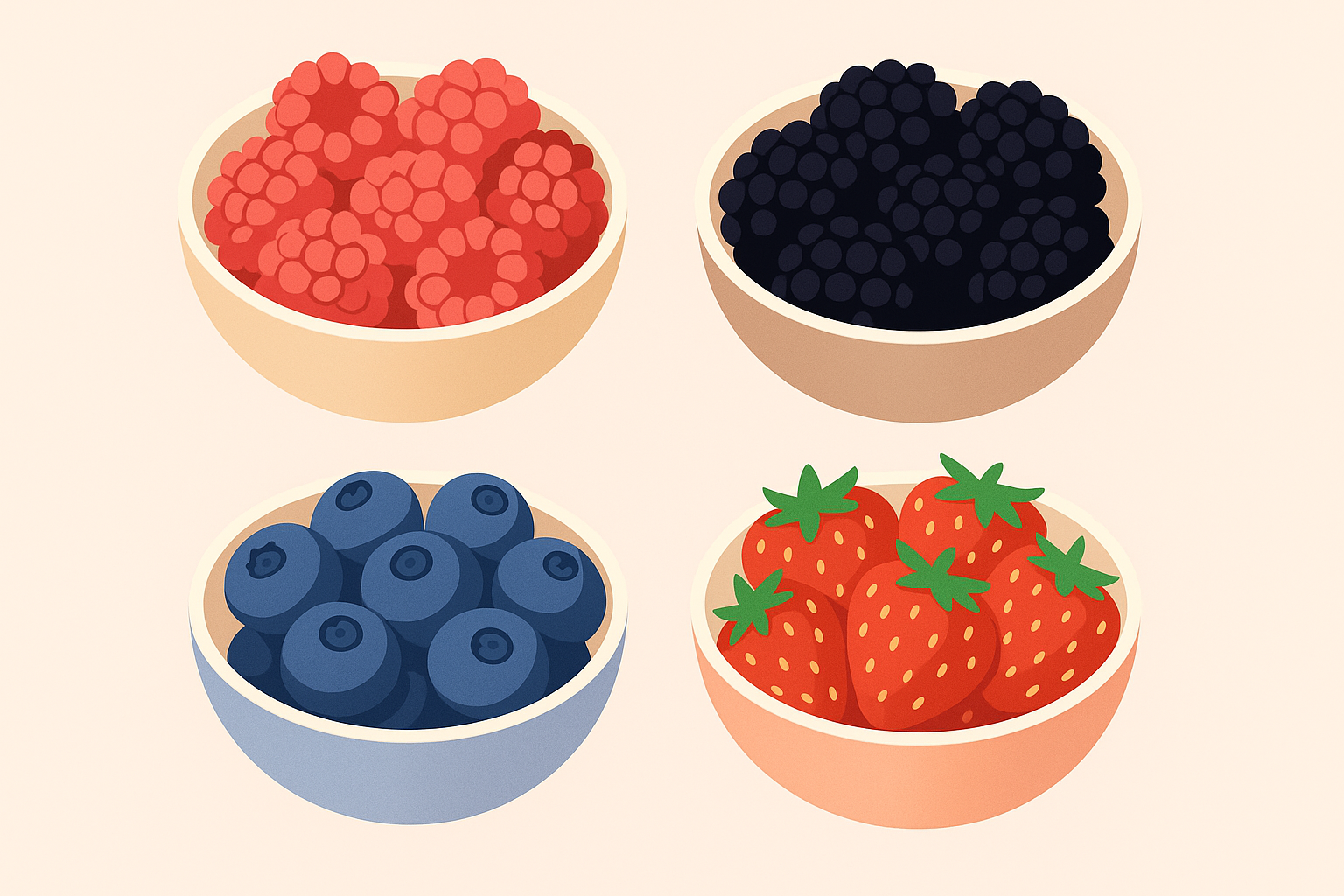
9. Raspberries – The Fiber Champions
At 8.0 grams per cup, raspberries are basically the holy grail of fiber fruits. I remember the first time I looked this up – I couldn’t believe something so small could pack so much nutrition. Those tiny seeds aren’t just for show – they’re doing serious work for your digestive system.
Here’s my reality check though: fresh raspberries are expensive and last about 12 hours before they start getting fuzzy. Frozen raspberries are your friend – they’re cheaper, last forever, and work great in smoothies and oatmeal. I buy the big bags at Costco and pretend I’m being fancy. These exceptional fiber foods deliver unmatched nutritional density.
Pro tip: Don’t wash raspberries until you’re about to eat them. Water makes them deteriorate even faster, which seems impossible but it’s true.
10. Blackberries – The Sturdy Alternative
Blackberries deliver 7.6 grams of fiber per cup and they’re way more forgiving than their raspberry cousins. They hold up better in the fridge, travel better, and don’t fall apart if you breathe on them wrong.
Wild blackberries are amazing if you can find them (or if you’re brave enough to forage), but they’re smaller and more tart. The big cultivated ones from the store are perfectly fine – don’t let perfect be the enemy of good.
Yes, the seeds get stuck in your teeth. That’s just part of the blackberry experience. Think of it as a reminder of all the fiber you just ate.
11. Strawberries – The Gateway Berry
Strawberries give you 3.0 grams of fiber per cup, which isn’t as impressive as other berries, but they’re the most approachable. Plus, they’re available everywhere and most people actually like them.
I’ve learned to manage my strawberry expectations. Those giant, perfect-looking ones at the grocery store in February? They taste like crunchy water. Small, local strawberries in season are a completely different fruit – sweet, juicy, and actually worth eating.
Hull them right before you eat them to keep the vitamin C from disappearing. And yes, organic matters here since strawberries are basically pesticide sponges.
12. Blueberries – The Reliable Choice
One cup of blueberries offers 3.6 grams of fiber and they’re probably the most foolproof berry. They last longer than other berries, freeze well, and don’t require any special handling.
Wild blueberries are smaller but pack more flavor and nutrition than the big cultivated ones. I keep frozen wild blueberries in my freezer for smoothies – they’re like little flavor bombs compared to regular blueberries.
The only downside? Out-of-season blueberries can be pretty bland. But they’re still doing good work for your gut even when they taste like nothing.
13. Elderberries – The Specialty Option
Elderberries provide 10.2 grams of fiber per cup, making them technically the highest-fiber berry. But here’s the catch – you can’t eat them raw. They’ll make you sick. They need to be cooked into syrup or jam.
I make elderberry syrup every fall when I can find fresh berries at the farmers market. It’s a bit of work, but the immune benefits are supposed to be amazing, and the fiber content is off the charts. When properly prepared, these fiber foods offer remarkable health benefits.
Don’t try to eat raw elderberries just because they’re high in fiber. Trust me on this one.
14. Gooseberries – The Tart Surprise
These little guys deliver 6.5 grams of fiber per cup, but good luck finding them. They’re more common in Europe, and American varieties tend to be pretty tart.
When I can find them, I use them in jams because they’re naturally high in pectin. The skin has most of the fiber, so you eat the whole thing despite the tartness.
They’re definitely an acquired taste, but if you like sour things, you might be into them.
15. Currants – The Tiny Powerhouses
Fresh currants provide 4.8 grams of fiber per cup through seeds that are basically all fiber. Red, black, and white varieties all work, though black currants have the most antioxidants.
The problem is they’re tiny and intensely flavored. A little goes a long way, which is good because they’re expensive and hard to find.
I’ve only found them at farmers markets during their brief summer season. They’re more of a novelty than a staple, but they’re fun to try if you see them.
Tropical & Exotic Fruits: Adventure in Every Bite (5 Fruits)
Alright, let’s get weird. Tropical fruits are where things get interesting – and sometimes expensive. These aren’t your everyday grocery store finds, but if you’re feeling adventurous (and your wallet can handle it), some of these pack serious fiber punch. These high fiber food options represent some of nature’s most exotic foods high in fiber.
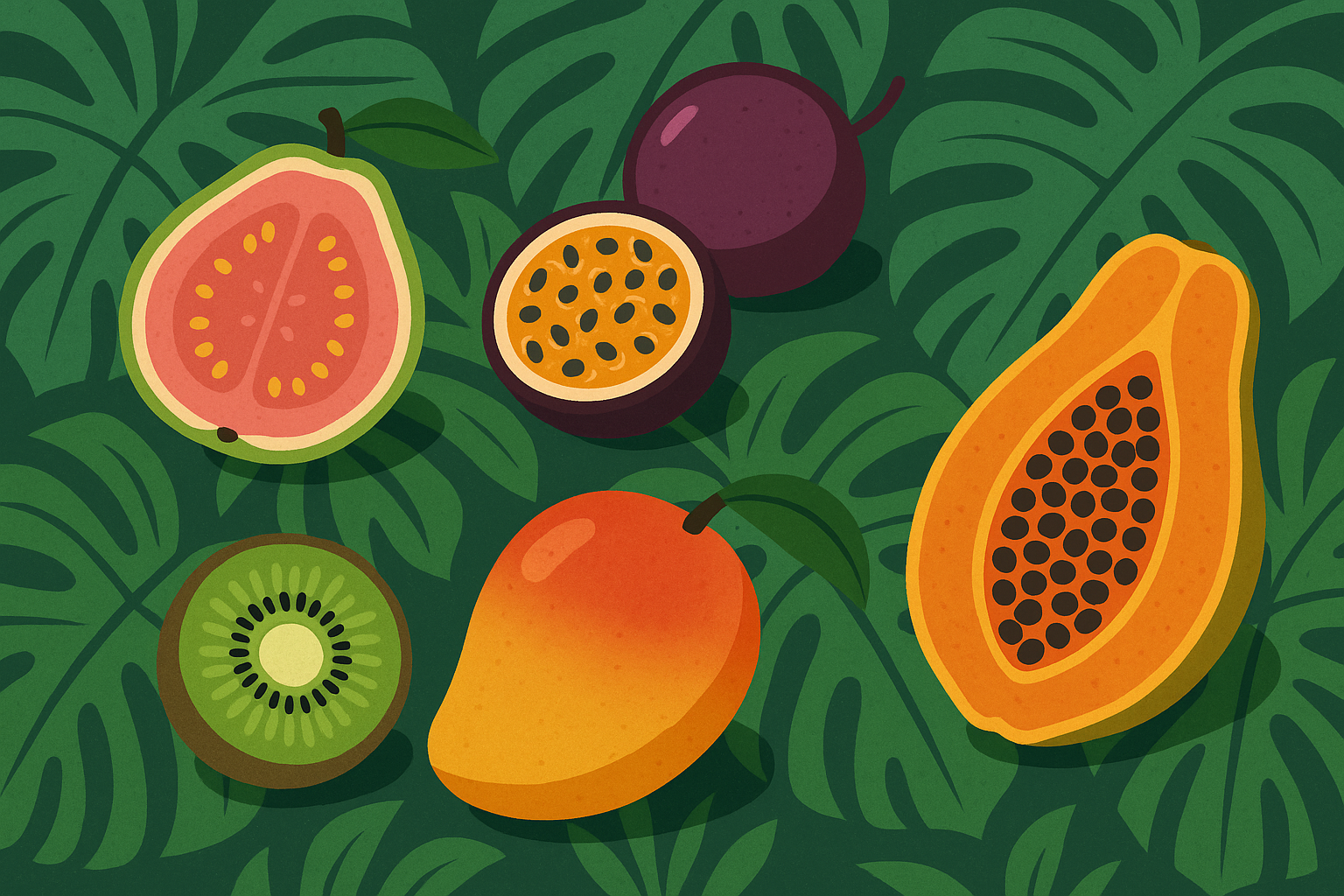
16. Guava – The Tropical Fiber Bomb
Guava delivers 8.9 grams of fiber per cup, and you can eat the whole thing – skin, seeds, everything. Pink and white varieties are both good, though pink ones tend to smell stronger (which can be good or overwhelming, depending on your perspective).
The challenge is finding good guava. Unless you live somewhere tropical, you’re probably looking at specialty stores or really good farmers markets. When it’s ripe, it should smell sweet and give slightly when you press it.
Full disclosure: Guava has a unique flavor that’s not for everyone. It’s sweet but musky, and the texture is different from anything you’re probably used to. But if you like it, you really like it.
17. Passion Fruit – The Fiber King (Sort Of)
Passion fruit pulp contains 24.5 grams of fiber per cup, which sounds amazing until you realize that nobody eats a full cup of passion fruit pulp. It’s incredibly intense and expensive.
Reality check: A realistic serving is maybe 2-3 passion fruits, which gives you the pulp from about 1/4 cup. That’s still around 6 grams of fiber, which is great, but let’s be honest about portions here. Among all high fiber foods, passion fruit stands in a category of its own.
The seeds are completely edible and provide most of the fiber. The flavor is intensely tropical and tart – I like to mix the pulp into yogurt or smoothies to tone it down.
Buying tip: Look for wrinkled, purple passion fruits that feel heavy. Smooth skin means they’re not ripe yet.
18. Kiwi Fruit – The Fuzzy Surprise
Kiwi offers 5.4 grams of fiber per cup, and here’s something most people don’t know – you can eat the fuzzy skin. I know it sounds weird, but it doubles the fiber content and isn’t as strange as you’d think.
Golden kiwis are less acidic than green ones, which is good if you have a sensitive mouth. Some people get a tingly feeling from kiwi enzymes – that’s normal but annoying.
I eat kiwis when they give to gentle pressure but aren’t squishy. The skin needs a good wash, but once you get used to it, peeling kiwis seems like a waste of time and fiber.
19. Mango – The Sweet Compromise
Mangoes provide 2.6 grams of fiber per cup, which isn’t spectacular, but they make up for it in taste and vitamin A content. The flesh closest to the skin has more fiber, so don’t be too neat when you’re cutting them.
Seasonal timing is everything with mangoes. In-season mangoes are sweet, juicy, and amazing. Out-of-season mangoes are fibrous, bland, and disappointing. Learn when mango season is in your area and stock up.
I choose mangoes that give slightly to pressure and smell sweet at the stem end. If they smell fermented or alcoholic, they’re overripe.
20. Papaya – The Gentle Giant
Papaya offers 2.5 grams of fiber per cup in soft, easy-to-digest flesh that’s great if you have a sensitive stomach. The black seeds are edible and have a peppery flavor – some people use them as a pepper substitute.
The enzymes in papaya help with protein digestion, which makes it great after a heavy meal. The texture is soft and the flavor is mild, making it perfect for people who find other tropical fruits too intense.
I eat papaya when it’s yellow-orange and gives slightly to pressure. The seeds are optional – they’re edible but definitely an acquired taste.
Dried & Processed Fruits: Concentrated Fiber Power (3 Fruits)
Dried fruits are like fiber concentrates – they pack a lot of nutrition into small packages, but they also pack a lot of calories and sugar. They’re convenient and shelf-stable, but you need to be smart about portions or you’ll end up eating way more than you intended. These high-fiber foods require mindful consumption as concentrated fiber food options.
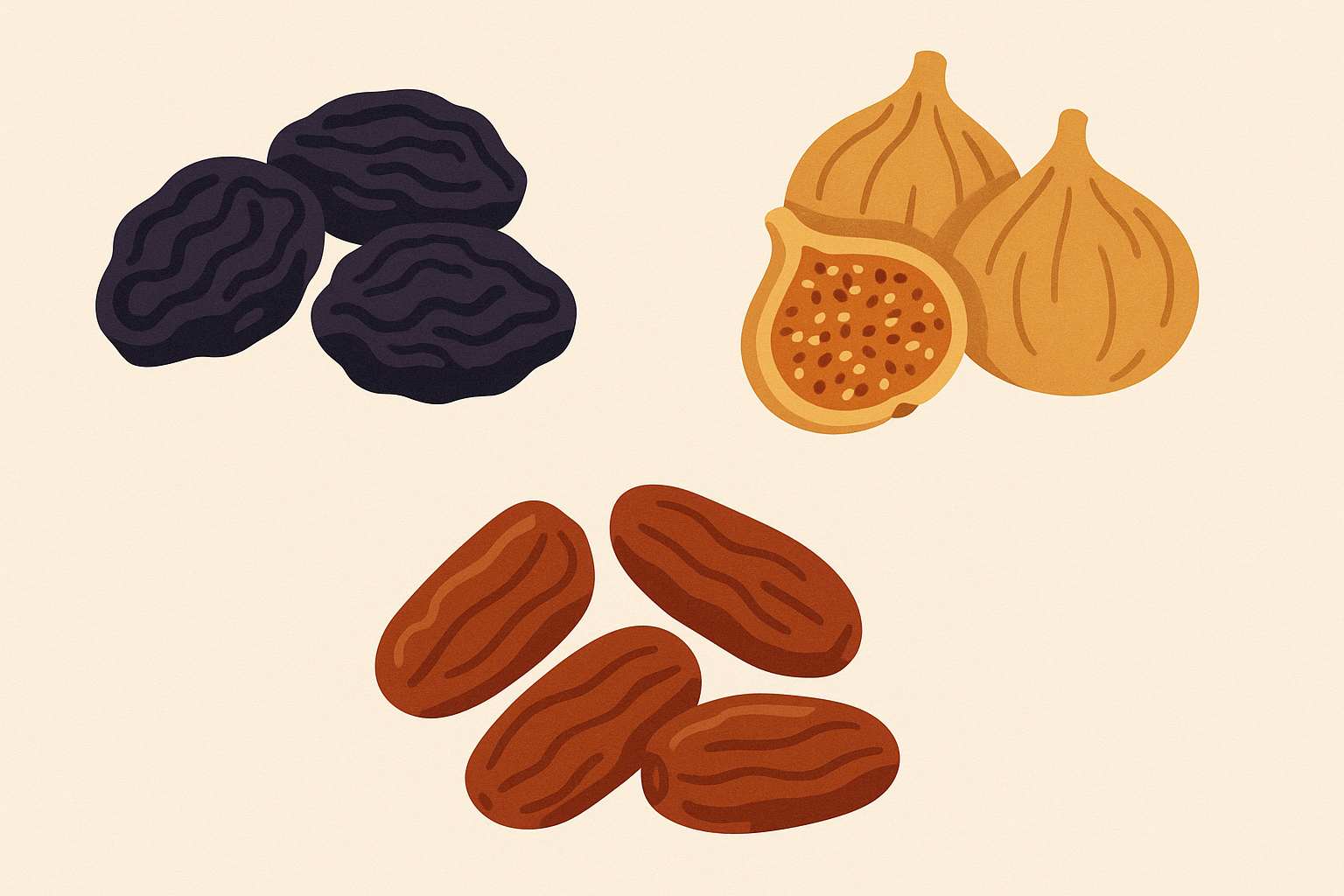
21. Prunes (Dried Plums) – Yes, They Actually Taste Good
Prunes deliver 12.4 grams of fiber per cup, and before you make that face, hear me out. I know prunes have a reputation, but they’re actually pretty tasty – like chewy, concentrated plums with a hint of caramel.
Here’s the thing about portions though – a cup of prunes is like 400+ calories, so don’t go crazy. I usually eat 3-4 as a snack, which gives me about 3 grams of fiber and doesn’t break my calorie budget.
The digestive effects are real – prunes contain sorbitol, which basically tells your
The digestive effects are real – prunes contain sorbitol, which basically tells your digestive system to get moving. Start small unless you want to spend quality time with your bathroom.
22. Dried Figs – Ancient Wisdom in Chewy Form
Dried figs provide 14.6 grams of fiber per cup through those crunchy little seeds distributed throughout. Turkish figs are softer and sweeter, while California figs are a bit firmer.
Again, portion control is key – a full cup is nearly 400 calories. I treat them more like candy and eat 2-3 at a time. The chewy texture actually helps with this because it takes work to eat them, unlike other dried fruits you can mindlessly munch.
Smart serving idea: Instead of eating a handful straight from the bag, chop them up and add them to oatmeal or yogurt. You get the fiber and sweetness without going overboard on calories.
23. Dates – Nature’s Candy With Benefits
Dates offer 6.7 grams of fiber per cup, but let’s be real – they’re basically candy. Medjool dates are huge and soft, while Deglet Noor dates are smaller and less sweet (but still pretty sweet).
I use dates chopped up in energy balls and baking where their natural sweetness can replace some of the added sugar. Two or three dates make a satisfying sweet snack that also happens to provide decent fiber.
The stickiness is real – dates will glue themselves to your teeth, so maybe don’t eat them right before a meeting. But that sticky texture also means they’re satisfying in a way that other sweets aren’t.
Large Fruits: Big Servings, Big Benefits (2 Fruits)
These fruits require some commitment – either in prep time, cost, or both. But if you’re willing to put in the work, they deliver substantial fiber along with unique nutritional compounds. These foods high in fiber offer generous portions for those willing to invest the effort.
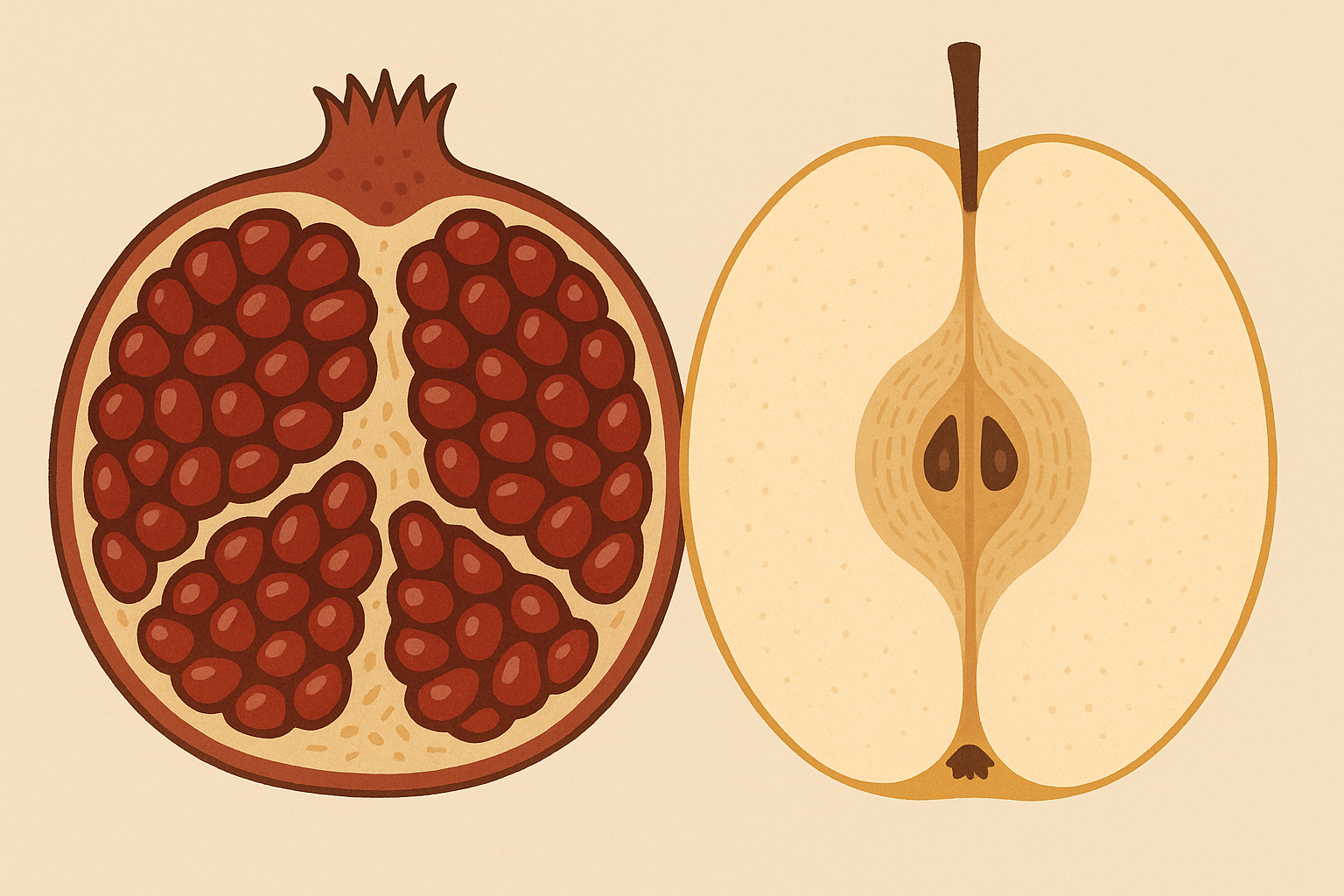
24. Pomegranate Arils – The Labor of Love
Pomegranate arils provide 7.0 grams of fiber per cup, but getting to those arils is like a 20-minute meditation session involving a bowl of water and a lot of patience. The payoff is those crunchy little jewels that pop in your mouth.
I’ll be honest – I only do this when I’m feeling motivated or when pomegranates are on sale. The rest of the time, I buy the pre-packaged arils and try not to think about the cost per pound.
The crunch factor is unique among fruits, and they store well in the fridge for several days after you extract them. Fall through winter is pomegranate season, which makes them perfect when berries aren’t available.
25. Asian Pear – The Apple-Pear Hybrid
Asian pears deliver 4.3 grams of fiber per medium fruit with a crisp texture that’s like a cross between an apple and a pear. They don’t soften like regular pears – they stay crisp until they go bad.
They’re more expensive than regular pears, but they last longer in the fridge, which somewhat justifies the cost. The skin is edible and contains good fiber, so don’t peel them unless you have to.
I like them in salads where regular pears would get mushy. They have a milder, less sweet flavor than regular pears, which some people love and others find bland.
Smart Strategies for Each Fruit Category
Look, I’ve made every mistake possible with high-fiber fruits, so let me save you some trouble:
| Fruit Category | Best Strategy | Fiber Optimization | Common Mistakes |
|---|---|---|---|
| Tree Fruits | Eat with skin intact | Choose organic when possible | Peeling unnecessarily |
| Berries | Buy frozen when fresh unavailable | Mix varieties for complete nutrition | Avoiding tart options |
| Tropical | Purchase ripe, use quickly | Eat seeds when edible | Buying unripe fruits |
| Dried Fruits | Control portions strictly | Pair with water/fresh fruit | Eating directly from package |
| Large Fruits | Prep in batches | Store properly after cutting | Wasting due to poor timing |
Tree Fruits: Keep It Simple
Eat the skin whenever possible – I can’t stress this enough. I used to peel everything and wondered why I wasn’t getting enough fiber. The skin is where the magic happens.
Buy organic for thin-skinned fruits if you can afford it. Apples, pears, and peaches absorb more pesticides than thick-skinned fruits. If organic isn’t in the budget, wash thoroughly and don’t stress about it. Understanding how to optimize these high fiber foods ensures maximum nutritional benefit.
Storage tip: Apples and pears last way longer in the fridge than on the counter. I keep them in the crisper drawer and they stay good for weeks.
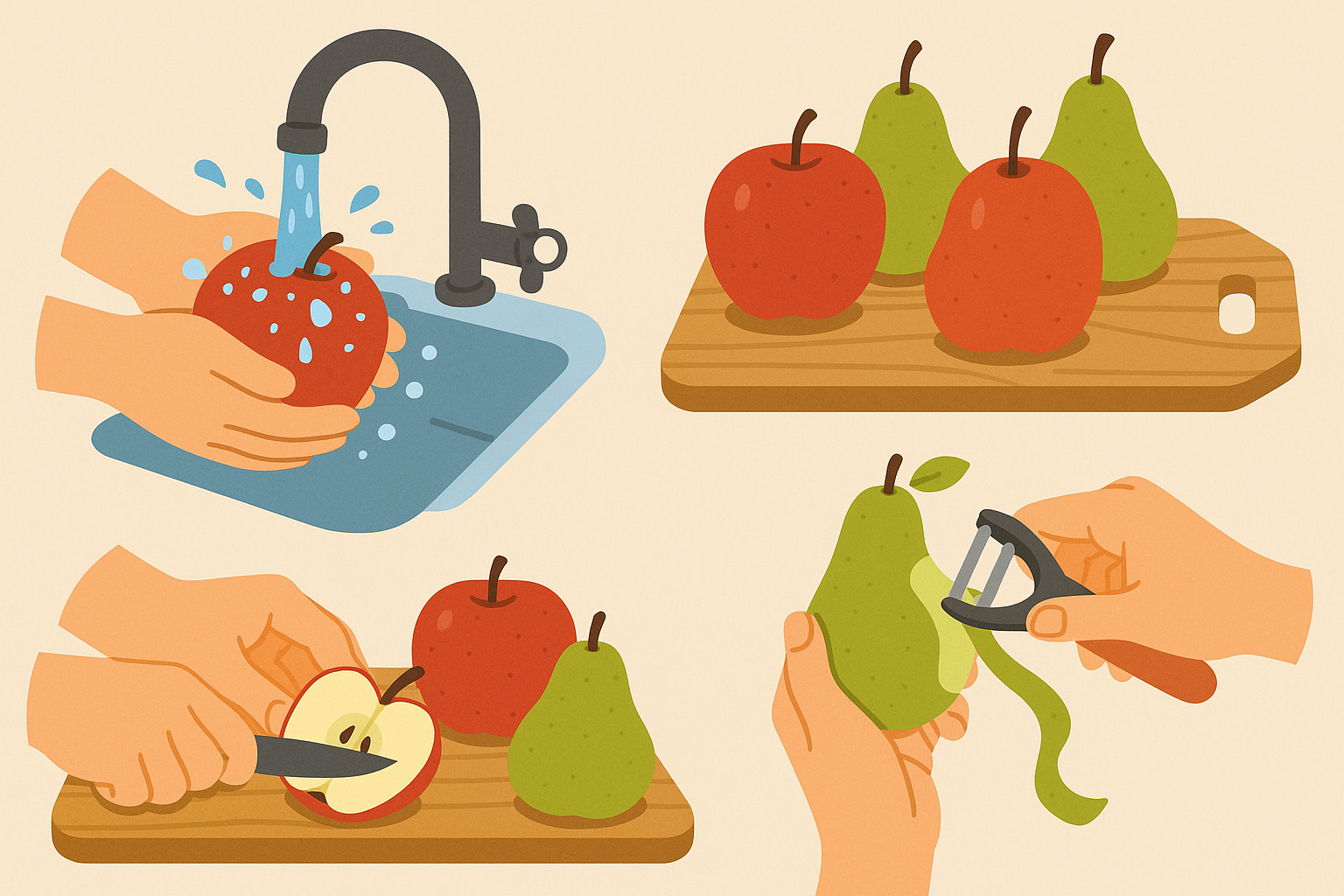
Berries: Manage Your Expectations
Frozen is your friend when fresh berries cost more than your rent. Frozen berries work great in smoothies and oatmeal, and you don’t have to eat them in the next 24 hours.
Buy them on sale and freeze them yourself – this is a game-changer. When berries go on sale, I buy several containers and freeze them in single layers on baking sheets before transferring to bags. My grocery cart looks like I’m preparing for the apocalypse during berry season.
Don’t wash until you’re ready to eat – water makes berries deteriorate faster, which seems impossible given how fast they already go bad.
Tropical Fruits: Timing Is Everything
Buy them ripe and use them quickly – don’t try to store tropical fruits long-term. They’re not built for it, and you’ll just end up disappointed.
Embrace the weird parts – kiwi skin, passion fruit seeds, papaya seeds. These are where a lot of the fiber lives, and once you get used to them, they’re not that strange. My kids think I’m weird for eating kiwi skin, but hey – more fiber for me!
Temperature matters for ripeness. Most tropical fruits continue ripening at room temperature but stop developing flavor once refrigerated. I buy them at different ripeness stages to ensure continuous availability.
Dried Fruits: Portion Control or Bust
Pre-portion immediately – I divide dried fruits into small containers as soon as I buy them. Otherwise, I’ll eat half the bag while watching Netflix.
Pair with water or fresh fruit – this slows down consumption and helps with satiety. A few dates with an apple is more satisfying than a handful of dates alone. Proper portioning of these concentrated fiber foods prevents overconsumption while maximizing benefits.
Large Fruits: Batch Process
Do the prep work all at once – if I’m going to spend 20 minutes extracting pomegranate arils, I’m doing multiple pomegranates and storing the arils for the week. Look, nobody wants to spend 20 minutes extracting pomegranate seeds on a Tuesday night.
Only prep what you’ll eat in 2-3 days – cut fruit goes bad fast, so don’t get overly ambitious with your meal prep.
How Organic Authority Supports Your Fiber Journey
At Organic Authority, we get that choosing high-fiber fruits isn’t just about nutrition – it’s about making choices that align with your values around health, sustainability, and quality of life. Our commitment to clean, transparent nutrition guides our recommendations for organic, locally-sourced options that maximize both fiber benefits and sustainability.
We’re not perfectionist about it – sometimes you buy conventional fruit because that’s what’s available or affordable. Sometimes you eat canned fruit because fresh isn’t an option. The goal is progress, not perfection. Just as we carefully evaluate our collagen products for bioavailability and purity, we encourage the same attention to quality when selecting high fiber food options and fiber-rich foods from farmers markets and trusted sources.
Supporting sustainable practices benefits everyone in the long run, but we’re realistic about the fact that not everyone can shop exclusively at farmers markets or afford premium organic produce.
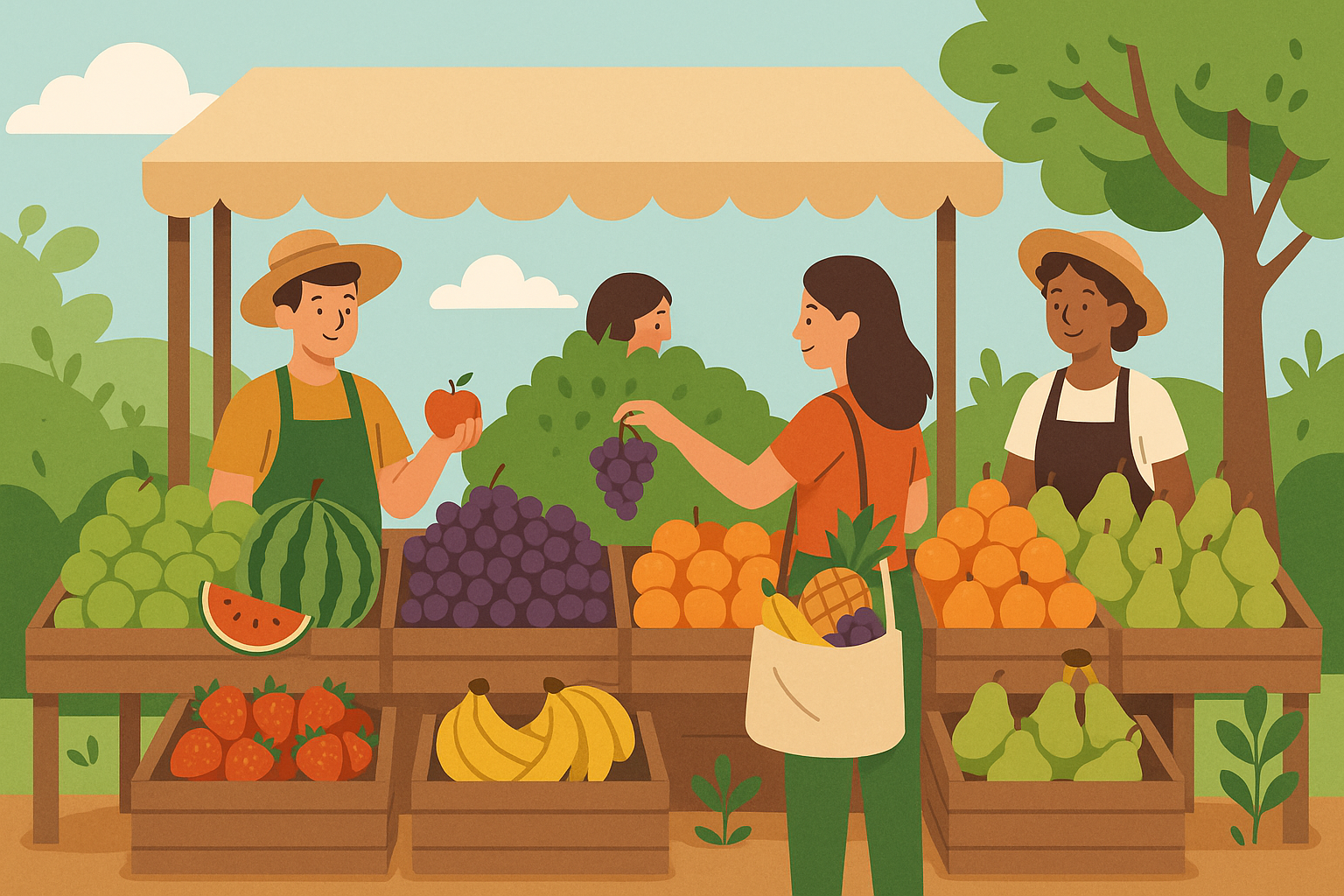
Final Thoughts
Here’s the truth: incorporating more high-fiber fruits into your diet doesn’t have to be complicated or expensive or perfect. Start with what you like and what you can afford, then gradually branch out from there.
My biggest mistake early on was trying to overhaul everything at once. I went from eating maybe one piece of fruit a day to trying to hit 35 grams of fiber overnight. The digestive consequences were… educational. Start slow, listen to your body, and give your system time to adjust.
Understanding foods that are high in fiber empowers you to make informed dietary choices. Don’t get hung up on having the “best” fruits – a regular apple you’ll actually eat beats exotic superfruit that sits in your fridge until it goes bad. Consistency beats perfection every single time.
The variety in this list means you’ll never get bored, whether you’re team apple-and-berries or ready to adventure into passion fruit territory. The key is finding what works for your taste buds, your budget, and your lifestyle, then building from there. If you’re like me and forget to eat breakfast half the time, keeping apples in your car is a game-changer.
Incorporating these 25 high fiber foods into your daily routine represents a powerful step toward better digestive health and overall wellness. Your digestive system will thank you, your energy levels will improve, and you might even discover some new favorite fruits along the way.
Pro tip: Buy berries on sale and freeze them immediately – future you will thank you. I learned to buy pears at different stages of ripeness so I’m not stuck with 6 ripe pears on the same day.
Even small daily improvements compound into significant health benefits over time. Don’t stress about being perfect – even adding one high-fiber fruit to your day makes a difference. Start small, be patient with yourself, and remember that even small changes add up.
Your journey toward optimal fiber intake doesn’t have to be complicated. Focus on whole fruits with edible skins, embrace seasonal variety, and listen to your body’s responses. These natural, nutrient-dense choices support the kind of holistic health where human and environmental wellness work together for lasting vitality.
Remember that fiber is just one piece of the wellness puzzle, but it’s a foundational piece that affects everything from energy levels to immune function. These 25 high fiber fruits give you the tools to build a sustainable, enjoyable approach to digestive health that will serve you for years to come.

